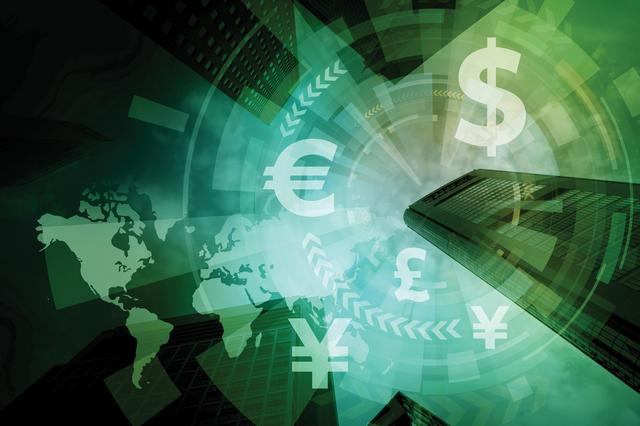As global economies navigate the uncertainties of a rapidly changing world, the path ahead remains shrouded in ambiguity. In the latest analysis from Marketplace.org, experts delve into the complexities and unpredictable forces shaping our economic future, describing it as a “black box” filled with unknown variables. This article explores the factors contributing to this opacity-from technological disruption and geopolitical tensions to shifting consumer behaviors-and what it means for businesses, policymakers, and everyday citizens striving to prepare for what lies ahead.
Unpacking the Uncertainty Behind Global Economic Forecasts
Global economic forecasts have long been a mix of calculated predictions and cautious speculation. Yet, the increasing volatility of financial markets, geopolitical tensions, and unprecedented disruptions like pandemics have created a fog that no model can fully penetrate. Analysts now often grapple with variables that behave unpredictably, such as supply chain shocks, shifting consumer behavior, and climate change impacts, making any forecast inherently tentative. Economic models rely on assumptions that can quickly become obsolete in a rapidly changing world, turning what was once a clear projection into a complex puzzle with many missing pieces.
Breaking down the layers of uncertainty reveals a landscape where multiple factors intersect, often amplifying one another in unexpected ways. Consider this snapshot of key influencers on economic predictions:
| Factor | Impact Level | Forecast Challenge |
|---|---|---|
| Geopolitical Instability | High | Difficult to quantify political shifts |
| Technological Innovation | Medium | Unpredictable pace of adoption |
| Climate Change Effects | High | Long-term economic disruptions |
| Consumer Sentiment | Variable | Shifts driven by social and economic conditions |
Forecasting is no longer about pinpointing exact figures but rather understanding a range of potential outcomes. This shift demands that policymakers and investors become more agile, embracing uncertainty as a core aspect of economic planning rather than a mere obstacle to accuracy.
Key Drivers Shaping the Unpredictable Market Landscape
Volatility in global markets is no longer an anomaly but the new norm, propelled by a web of complex, interrelated factors. Geopolitical tensions, technological disruptions, and shifting consumer behaviors are converging to blur traditional economic forecasts. Supply chain fragility, intensified by recent global events, continually hampers production and distribution, amplifying uncertainty across industries. Meanwhile, central banks grapple with inflationary pressures amid uneven recovery patterns, challenging established monetary policy frameworks.
Adding to the complexity, the rise of sustainable investing and digital currencies reshapes capital flows, introducing fresh risks and opportunities. Below is a snapshot of critical influences currently driving economic unpredictability:
| Driver | Impact | Key Trend |
|---|---|---|
| Supply Chain Disruptions | Delayed production & higher costs | Re-shoring initiatives |
| Inflation & Interest Rates | Consumer spending shifts | Rate hikes vs growth dilemma |
| Geopolitical Unrest | Market volatility spikes | Trade realignments & sanctions |
| Technological Innovation | New market entrants disrupt sectors | AI adoption & automation |
| Sustainable Finance | Capital flows redirect | ESG criteria dominate |
- Adaptive strategies will be essential as businesses navigate this fluctuating terrain.
- Data-driven insights help decode hidden market signals underlying apparent chaos.
- Collaboration across sectors may mitigate risks and accelerate innovation in response to evolving challenges.
Strategies for Navigating Financial Volatility in an Opaque Future
In the face of unpredictable economic shifts, cultivating agility remains paramount for investors and businesses alike. Prioritizing a diversified portfolio can mitigate risks, balancing exposure across asset classes that perform differently under stress. Additionally, adopting a mindset of continuous learning to stay informed about emerging market trends and geopolitical developments equips stakeholders to make timely adjustments. Leveraging data analytics and advanced forecasting tools further enhances an organization’s ability to anticipate volatility, turning uncertainty into actionable insight.
Practical frameworks can also streamline decision-making in uncertain times. For example, implementing scenario planning helps organizations envision varied outcomes and prepare tailored responses. The following table outlines key strategies alongside their potential benefits for economic navigation:
| Strategy | Benefit |
|---|---|
| Diversification | Risk reduction through asset spread |
| Scenario Planning | Preparedness for multiple outcomes |
| Data-Driven Forecasting | Enhanced decision accuracy |
| Continuous Education | Adaptability to changing contexts |
- Maintain liquidity: Ensure access to cash or liquid assets to navigate unforeseen downturns.
- Focus on core competencies: Optimize strengths to stay competitive when markets fluctuate.
- Build strategic partnerships: Collaborate to share resources and knowledge, reducing individual risk.
Concluding Remarks
As the global economy continues to face unprecedented uncertainties-from technological disruption to geopolitical tensions-the path forward remains obscured. While experts scrutinize data and trends, the inherent unpredictability of economic developments turns our future into a proverbial black box. What is clear, however, is the urgent need for adaptive policies, resilient markets, and informed citizen engagement to navigate these unknowns. Marketplace.org will continue to monitor these evolving dynamics, providing insights as we collectively seek clarity in an uncertain economic landscape.
